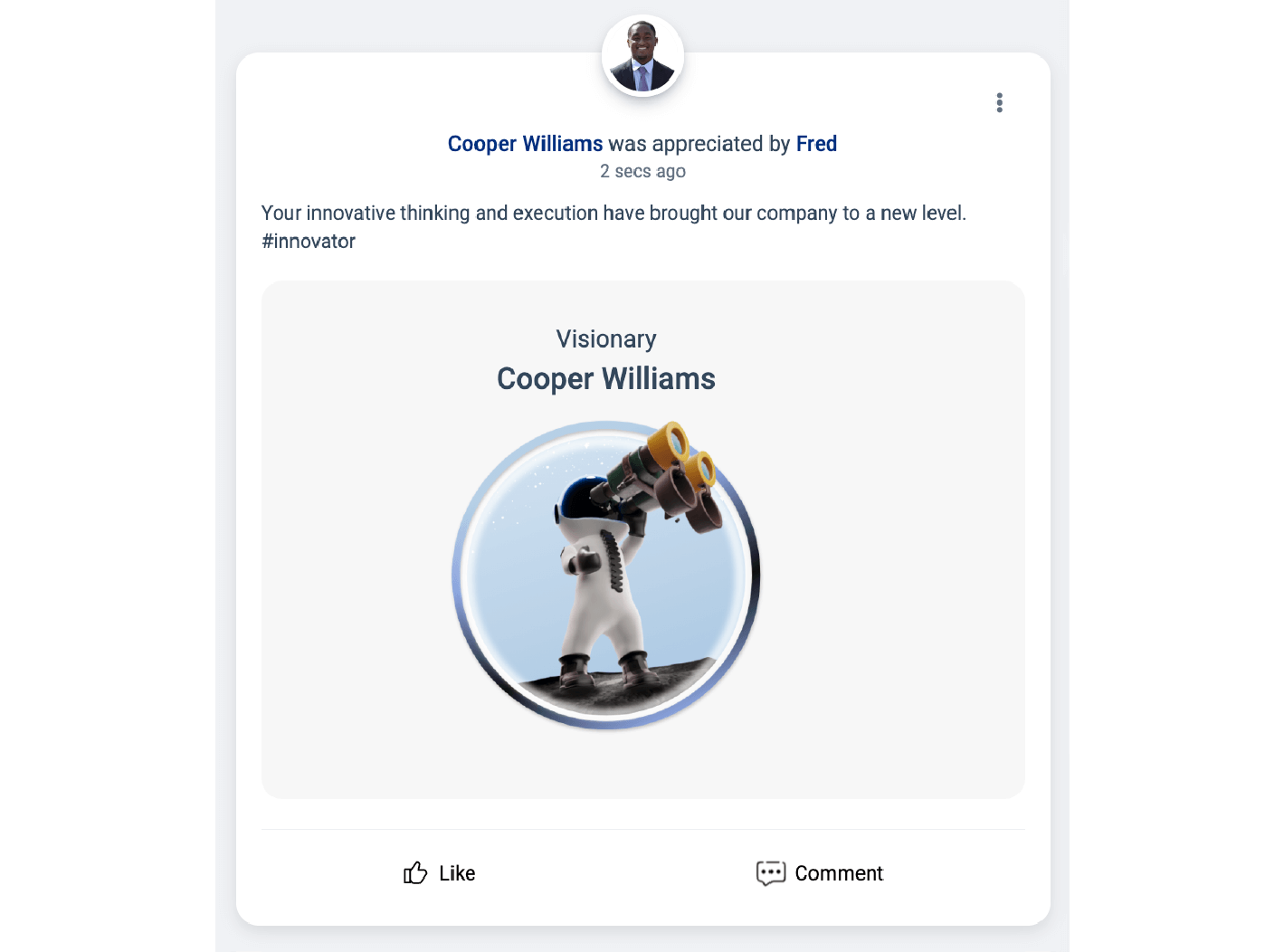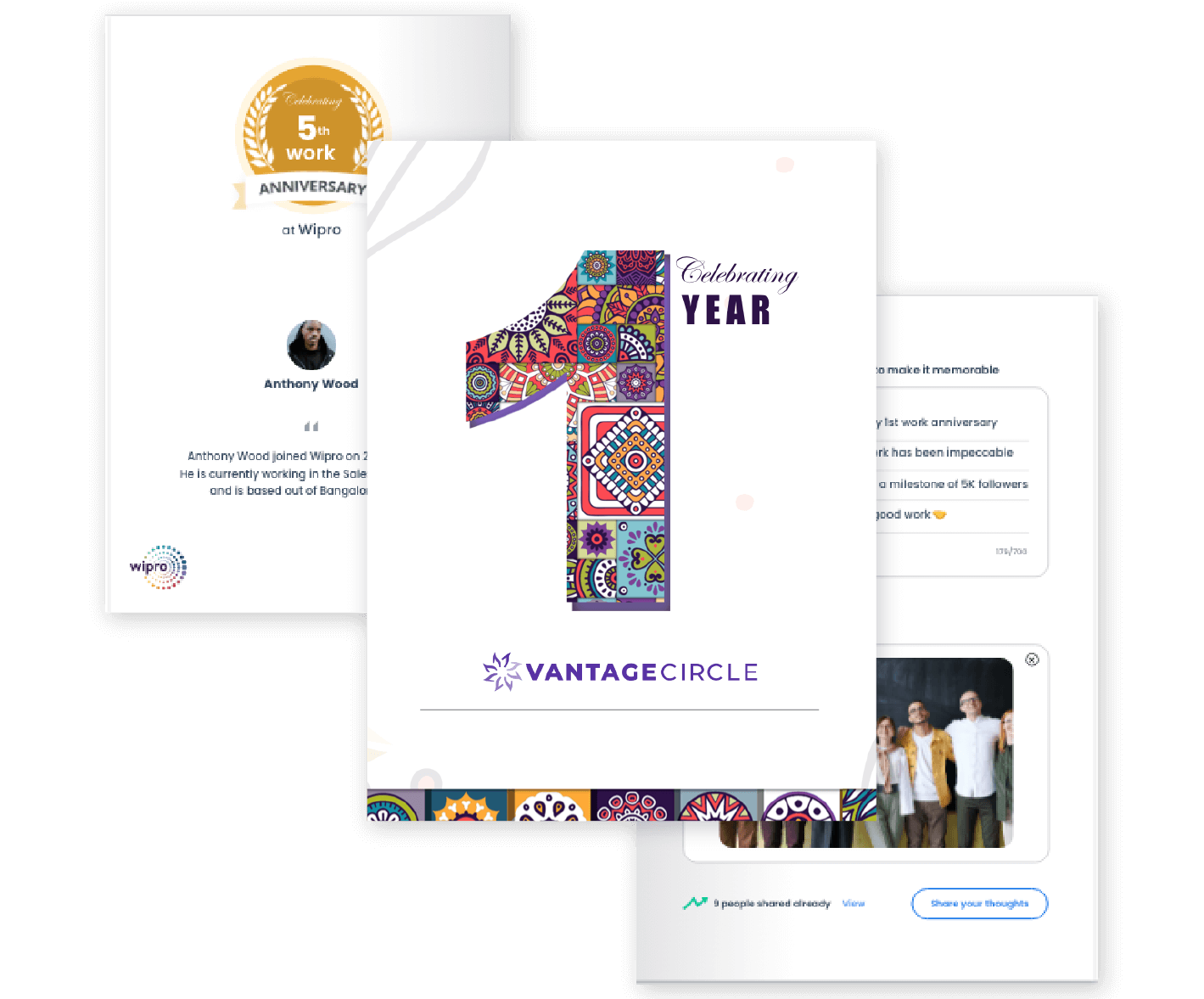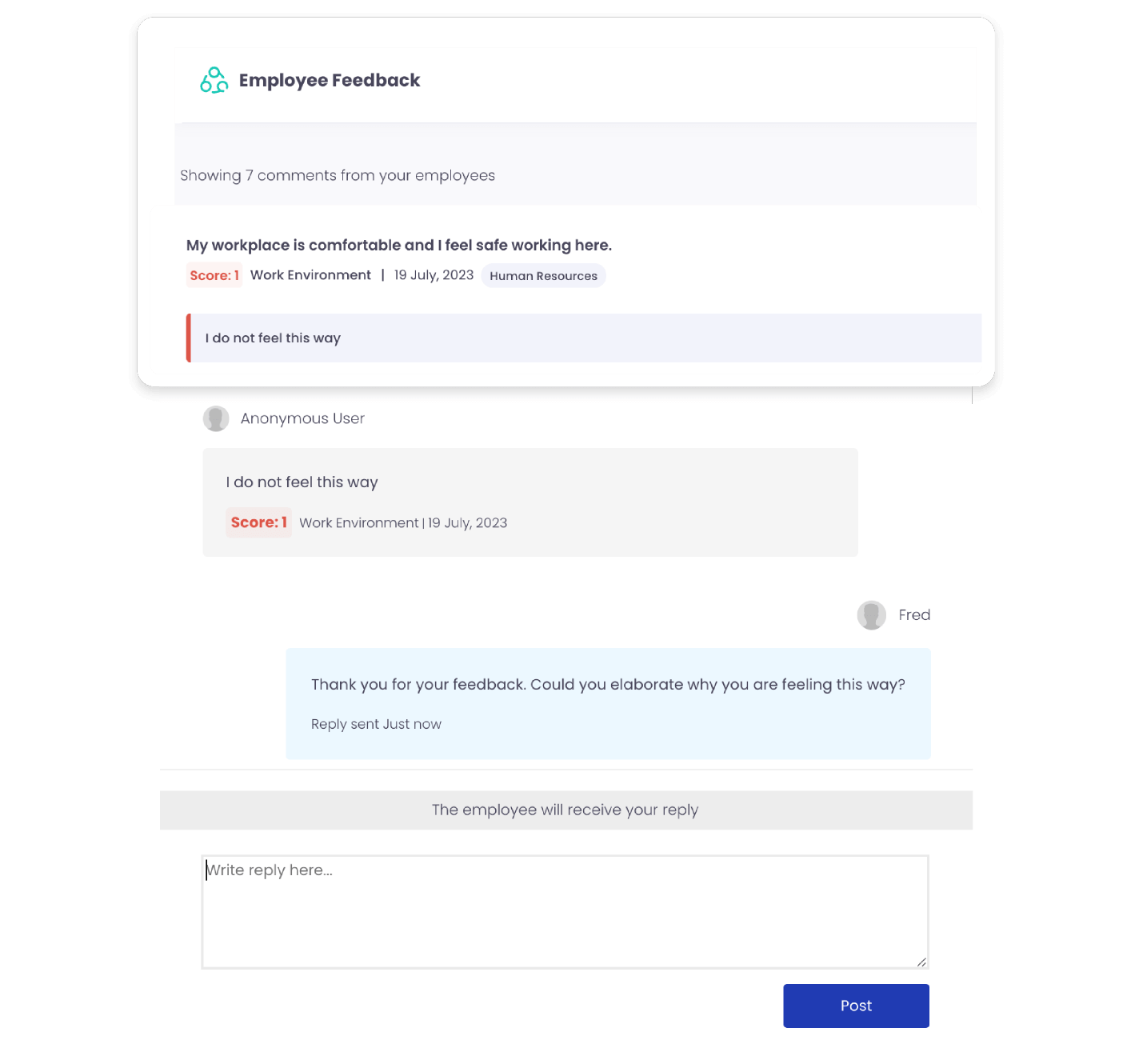10 Key Strategies You Need to Know to Enhance Employee Experience Management
Job seekers in the present era have acknowledged the importance of employee experience while job hunting. And organizations are now compelled to prioritize Employee experience management (EXM) and the strategies around it.
Investing in EXM offers numerous benefits. These include enhanced employee engagement and increased productivity. It also contributes to cost savings and fosters a positive workplace culture. Moreover, it plays a crucial role in improving mental health and overall well-being.
In this blog, we will explore various strategies that business leaders and HR professionals can implement right away to step up their Employee experience game.
Key Takeaways
- What is Employee Experience Management?
- Understanding the Role of an Employee Experience Manager
- 10 Strategies to Enhance Employee Experience Management
- How to Measure Employee Experience?
What is Employee Experience Management?

According to Glassdoor, 77% of job seekers say employee experience is a deciding factor when looking for a job.
Employee Experience Management (EXM) refers to the holistic approach taken by organizations to create an environment where employees feel valued and empowered.
At its core, Employee Experience Management focuses on understanding and enhancing the employee's interaction with the organization. It includes aspects like company culture, leadership style, and work environment. The goal is to create a positive and enriching experience for every employee.
EX Management aims to keep employees engaged and motivated throughout their journey within the company. It encompasses every interaction, touchpoint, and perception an employee has from the moment they join the organization until they depart.
Benefits of Employee Experience Management
-
Enhanced Employee Engagement: Improving the overall employee experience leads to higher engagement, commitment, and motivation levels among employees.
-
Increased Productivity: A positive employee experience correlates with improved productivity, as satisfied and engaged employees tend to be more focused and efficient.
-
Cost Savings: Improved employee experience reduces recruitment costs associated with high turnover and absenteeism while increasing organizational performance.
-
Positive Workplace Culture: Investing in employee experience creates a positive workplace culture, fostering a sense of belonging, inclusivity, and collaboration among employees.
-
Mental Health and Well-being: Focusing on employee experience contributes to improved mental health, reduced stress levels, and better overall well-being among employees.
Role of an Employee Experience Manager
To enjoy the mentioned advantages, you'll need someone to conceptualize the overall employee experience. This is where the role of an employee experience manager comes into play.
An Employee Experience Manager’s (EX Manager) role revolves around designing, understanding, and improving every aspect of an employee's journey within a company.
For instance, let’s consider the onboarding process. An EX Manager ensures that new hires feel welcomed and supported by creating comprehensive onboarding programs.
Furthermore, EX Managers act as advocates for employees, ensuring their voices are heard and their concerns addressed. They use feedback and data analysis to refine policies and programs, ensuring they align with the evolving needs of the workforce.
Recommended Resource: The Roles of an Employee Experience Manager
10 Ways to Step Up Employee Experience Management Game
1. Effective Onboarding Processes

Creating a good onboarding process is like laying the groundwork for a successful journey for new employees. A well-structured onboarding process helps them feel welcomed, informed, and supported from day one.
A simple welcome message or a small welcome kit with essential information and goodies can do wonders in setting a positive tone.
You can also create an onboarding checklist that covers everything from company history to team introductions, ensuring new employees feel welcomed and informed.
Furthermore, provide adequate training and resources to help them get familiar with their tasks, tools, and the company's processes. This instills confidence in them and helps them settle down in their roles.
2. Promote Employee Recognition

Promoting employee recognition is crucial for boosting morale and motivation. When employees are appreciated for their efforts, it leads to increased productivity and engagement.
The key here is to weave recognition into the fabric of your company's culture. When acknowledgment and recognition becomes a habit, employees feel more connected and invested in the company's success.
Furthermore, implementing a robust employee recognition program is a pivotal strategy in elevating employee experience. Imagine a workplace where gratitude is a daily norm, and acknowledging efforts is routine.

Source: Vantage Circle
3. Invest in Employee Well-being Programs

Prioritizing employee well-being is a great way for an organization to show that they value their workforce beyond the work they do. When employees feel supported, they're more likely to be committed to their jobs.
But how do you prioritize employee well-being? One way to do this is by introducing your workforce to wellness programs that include yoga or meditation sessions to handle stress and improve their emotional health.
You can also take the help of corporate wellness apps like Vantage Fit, which offers various fitness challenges such as running and cycling. This application incentivizes the challenges and encourages employees to maintain a healthy lifestyle.
4. Develop a Strong Company Culture

Developing a strong company culture involves cultivating a shared set of values, beliefs, and behaviors that guide how employees interact and work together.
Take the example of Zappos whose strong emphasis on transparency and open communication allowed their employees to contribute ideas and feedback freely. This approach led to increased job satisfaction among Zappos employees.
5. Career & Skill Development Opportunities

Investing in employees' learning shows a company's commitment to their growth and long-term success.
By providing training programs, workshops, and opportunities for skill development you are investing in the growth of your employees. This not only enhances their abilities but also boosts morale.
For instance, LinkedIn offers Learning and Development programs to its employees to upskill and grow within the company continuously. It is designed to provide employees with various opportunities to enhance their skill and stay updated with the industry trends.
6. Promote Work-Life Balance

Promoting work-life balance is a strategic cornerstone in effective Employee Experience Management. By prioritizing employees' well-being, organizations create a supportive and sustainable work environment.
Offering flexible work hours, respecting time off, and fostering a culture that values personal life contribute to a positive employee experience. As a result, it fosters a healthier and more productive workplace dynamic.
7. Embrace Diversity, Equity, and Inclusive (DEI) Initiatives

Embracing diversity means welcoming people from various backgrounds, such as different races, cultures, genders, ages, abilities, and more.
When organizations value and celebrate diversity, employees from various backgrounds feel a sense of belonging. It contributes to a more positive and collaborative environment.
DEI initiatives also promote fairness and equal opportunities, enhancing employee morale and commitment. Furthermore, implementing diversity hiring in the organization builds a stronger, more cohesive, and forward-thinking team as it presents diverse talents and viewpoints.
8. Implement Employee Surveys and Feedback

Implementing employee surveys and feedback mechanisms offers insight into employees sentiments, concerns, and suggestions. Therefore, organizations that regularly seek feedback through surveys show that they value their employees' opinions.
By regularly collecting and analyzing feedback, organizations can identify areas for improvement and tailor strategies to meet employees' needs. This demonstrates their commitment to empowering employees.
It is important to note that surveys offer a structured platform for employees to express their thoughts and opinions freely. This enables them to communicate their challenges and suggestions more easily and straightforwardly.
9. Celebrate Milestones and Achievements

Celebrating milestones is a meaningful way to demonstrate appreciation for employees' dedication and hard work within an organization. It instills a sense of pride in employees, leading to increased employee loyalty.
Recognizing significant moments such as reaching sales targets or achieving a career milestone can reinforces a positive company culture. Moreover, recognizing milestones publicly sets examples for others to strive for similar accomplishments.
Additionally, celebrating workplace milestones, such as work anniversaries, provides an excellent opportunity to honor employees' dedication. Utilizing Service milestone awards is an effective way to commemorate the tenure of employees who have contributed significantly to the company.

Source: Vantage Circle
10. Team Building Activities

Team building activities are pivotal in enriching the overall employee experience within a company. When people get along well and communicate effectively, they work better together.
Moreover, team-building activities often promote problem-solving and creative ability. These exercises encourage employees to think outside the box, share ideas, and work together to overcome challenges.
Companies like Pixar organize creative team-building exercises to enhance collaboration and innovation. They conduct brainstorming sessions where employees from different departments work together to generate new ideas for projects.
Why is Employee Experience Management Important for Organizations?

According to research by IBM, companies investing in experience management had over 4x the average profit and 2x employee engagement.
Employee Experience Management (EXM) is crucial for organizations as it directly impacts productivity, retention, employee satisfaction, and overall company success.
EXM focuses on creating a positive work environment, nurturing employee well-being, and enhancing engagement throughout an employee's journey within the organization. It makes employees feel supported, valued, and motivated to go the extra mile.
For instance, let’s take the example of Adobe, who has recognized the importance of Employee Experience Management by investing in initiatives that attract and retain top talent. Its focus on employee experience directly contributes to enhanced productivity, customer satisfaction, and overall organizational success.
How to Measure Employee Experience?

Measuring employee experience involves gathering data and insights to understand the overall satisfaction, engagement, and well-being of employees within an organization.
Companies can utilize four main sources of employee data to gauge the employee experience and evaluate the employee journey:
1. Surveys
Surveys are indispensable tools to gather feedback and quantitative ratings from employees on key aspects of their experience. It enables organizations to make informed decisions and improvements.
Let’s look at the different surveys that cater to different needs and timeframes, each playing a pivotal role in understanding and driving change.
-
Annual engagement surveys: This comprehensive assessment is conducted annually to gauge overall employee satisfaction, motivation, and workplace culture.
-
Pulse Surveys: They are brief and frequent check-ins to capture real-time feedback and immediate reactions. It is usually conducted monthly, quarterly, or even weekly.
-
Event-based Surveys: These aim to capture immediate feedback and reactions related to a particular event, allowing organizers to assess its success and areas for improvement.
-
Exit Surveys: These are conducted when an individual leaves an organization. They gather feedback regarding the reasons for departure, overall experience, and suggestions for improvement.
2. HR Metrics
Human Resources (HR) metrics provide quantifiable data to evaluate HR functions, workforce performance, and overall organizational health. It aids HR professionals in making informed decisions and implementing strategies that contribute to the company's success.
Some of the useful metrics include:
-
Employee Turnover Rates: This metric measures the percentage of employees who leave an organization within a specific period.
-
Internal Hire Percentage vs. External Hires: It compares the percentage of individuals hired from within an organization to those recruited externally to fill open positions.
-
Cost Per Hire: It measures the total expenses incurred in the recruitment process for each new employee.
-
Employee Retention Rate: Monitors the percentage of top-performing employees retained within the organization.
3. Productivity Data
While respecting privacy, organizations can leverage usage data from company-provided tools employees use daily. It offers valuable insights into employee behavior, productivity, and engagement without compromising individual privacy.
Let's explore how different metrics derived from these tools can provide actionable insights:
-
Volume of messages/posts on internal collaboration tools: It provides insights into team communication, collaboration patterns, and overall engagement.
-
Document workflow process efficiency rates: Analyzing usage data related to document workflows helps assess efficiency in handling tasks, sharing information, and completing projects.
-
Completion rates for online learning modules: It measures employee engagement with educational resources and their commitment to skill development.
-
App usage analytics: Analyzing usage data from various applications or software tools employees use provides insights into tool adoption, preferred functionalities, and areas needing improvement.
4. Observational Data
Observational data refers to information collected through direct observation without influencing or interfering with the natural course of action. It systematically records behaviors, interactions, or occurrences in their natural settings to gather valuable information.
For instance, observing team meetings, interactions during work hours, and informal discussions can help organizations understand communication styles, team cohesion, and potential conflicts.
Similarly, observing one-on-one meetings between managers and employees helps assess managerial styles or communication effectiveness.
Leveraging Technology to Improve Employee Experience

1. Digital Onboarding Platforms
Digital onboarding platforms create a comprehensive, interactive, and user-centric onboarding experience. They ensure new employees are well-informed, engaged, and aligned with the company's culture and goals.
Trakstar and Deel are a few examples of digital onboarding platforms used by organizations to streamline onboarding processes
2. Employee Pulse Survey Tools
Employee survey tools are platforms designed to create, distribute, collect, and analyze feedback from employees within an organization. These tools enable companies to gather insights and opinions from their workforce on various aspects such as employee satisfaction, engagement, and more.
You can explore a diverse array of tools available in the market today. Some of them include Vantage Pulse and Leapsome. These platforms lets you measure employee engagement levels using eNPS(Employee Net Promoter Score) and get real-time employee feedback.

Source: Vantage Pulse
3. Performance Management Software
Performance Management Software is a tool designed to help organizations effectively manage, evaluate, and improve their employees' performance.
Platforms such as peoplebox and Keka facilitate goal setting to establish individual or team objectives that align with the broader organizational goals.
4. Learning and Development Platforms
Learning and Development Platforms facilitate employee learning, training, and skill development within organizations.
Platforms like TalentLMS and LinkedIn Learning provide opportunities for employees to enhance their skills and knowledge by offering learning materials such as courses, videos, and webinars.
Bottom Line
Employee experience management should be a top priority for every organization looking to thrive in today's market. The data shows that positive employee experience directly translates into higher productivity, innovation, and retention.
While experience management requires investment, its dividends over time cannot be overstated. By making employees feel truly valued, the stage is set for shared success.


















